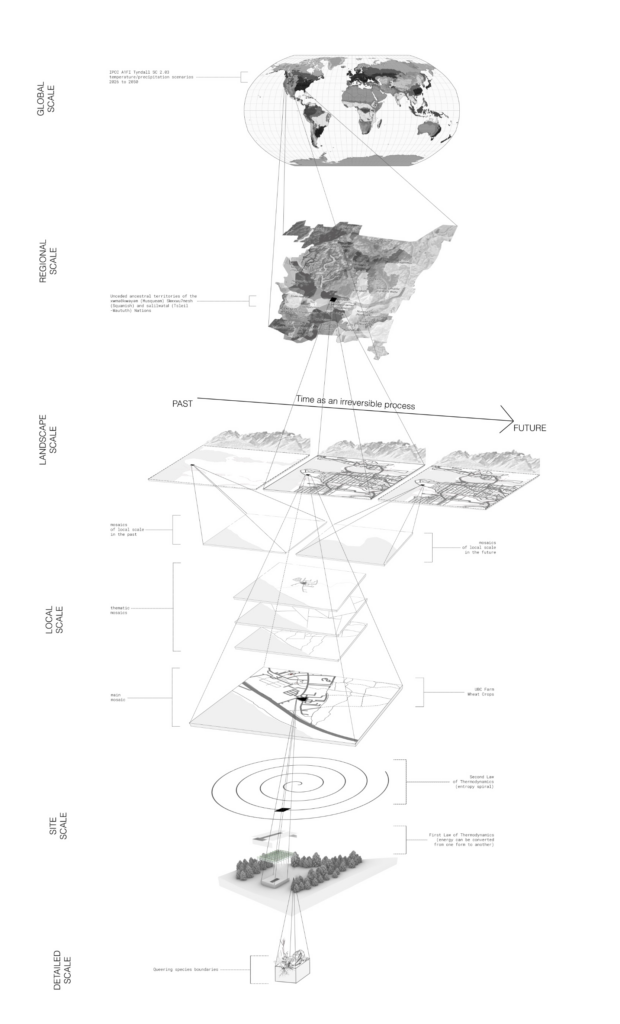
As uninvited guests upon another’s land, our project sets out with the following question; what does it mean to grow a building? Within the context of ongoing settler colonialism that continues to divide, monetize and pollute the land, we are guided by Marisa Preferis’ essay, Transcending Movements: Weeds as Queering Species Boundaries. Preferis outlines the concept of “weediness” as a form of resistance against hierarchical systems. Plants such as dandelion, mugwort, and nettle, disrupt and blur the lines between natural and cultural landscapes. Preferis suggests that embracing the diversity and adaptability of weeds can lead to a more inclusive and sustainable approach to ecology and environmental activism. So, how do we embrace the complex modern ecology that surrounds us? We have to consider what we will grow when the weather changes. What will we build with, eat, and live beside, during the prolonged droughts, warmer autumns and atmospheric rivers? Adapting to fluctuations in water levels, temperature and solar exposure prompts diverse characteristics and strategies in architectural design. When incorporated into a systemless building; straw bale and thatch construction assemblies effectively balance vapor diffusion, thermal regulation, and air ventilation. With so much to consider in terms of adaptability, dampening and defending against the unknown severity of climate change, our approach invites radical acceptance as a way of making space, both physically and conceptually.